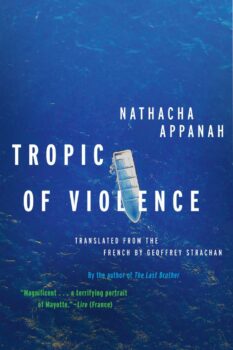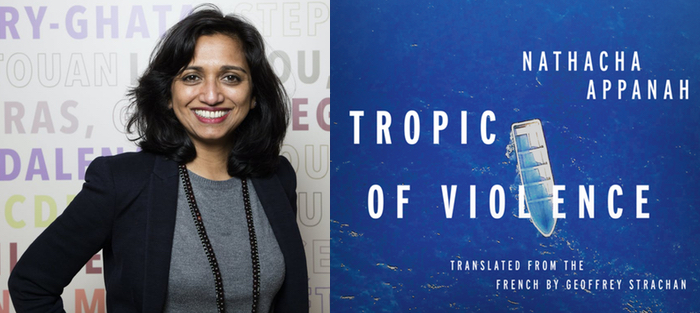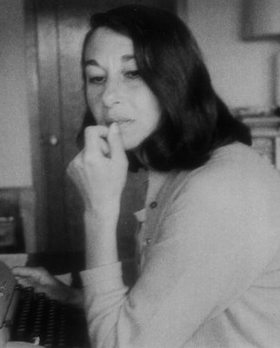Four years ago, I wrote about omniscience and empathy in Grace Paley’s short story “Samuel.” The essay was published the morning after the 2016 presidential election, following a season of intense debate about cultural marginalization through white literary entitlement and appropriation, kindled by Lionel Shriver’s keynote at the Brisbane Writers’ Conference earlier that September.
In the years since, these debates have continued, but it’s only recently that it seems like the reckoning might lead to substantive changes in the publishing industry. There was first the controversy surrounding Jeanne Cummins’ American Dirt, a novel that critics Esmeralda Bermudez and Myriam Gurba took to task for the industry support it received to the exclusion of Latinx writers and for its lack of imagination as literature. But then the coronavirus took hold of the world, and the debate this novel had ignited was left to smolder. Yet what was revealed when much of the US went into various forms of stay-at-home orders was a similar story: the virus has disproportionately affected communities of color in terms of both health and economics. We might not have been talking books during this time, but it was the same issues that the criticism of American Dirt had raised: these disparities were the legacy of slavery and colonialism, the appropriation of the bodies of people of color for the safety and maintenance of the dominant white social order.
The injustice of these issues was brought to the fore in an undeniable way in May with the murder of George Floyd in Minneapolis, culminating in Black Lives Matter protests across the United States, then around the world. And it was with these ongoing protests though the month of June that the debate about representation and support for writers of color in the publishing industry was reignited, with black fantasy author L.L. McKinney launching the hashtag #publishingpaidme. One of the major criticisms of American Dirt was not that Cummins dared to imagine the lives of Mexicans affected by violence and the harsh realities of immigrating to the US, but that she rendered it in a way that didn’t ring true—and that she received a seven-figure advance for the novel. Ideally, the publishing industry will bring these lessons to bear on the marginalizing effect of pouring resources into one writer to the exclusion of myriad others. But what can we, as writers, do to continue to pursue our own work—especially if it involves characters whose social identities don’t map onto our own?
As a discipline, creative writing has been discussing such issues with increasing focus to come up with new frameworks for how to talk productively about issues of marginalization in workshop. These conversations have opened up new dimensions in considerations of craft. For example, Alexander Chee considers the point of telling through an analysis of James Baldwin’s Go Tell It on The Mountain: rather than simply consider time or distance in perspective, he looks at the aim of relating a certain story in a certain way. Rebecca Makkai advocates consideration of the ear of the story, a term she uses to describe for whom the narrative is crafted. What does the reader need to know? What can we assume as part of their experience and knowledge?
Both the point of telling and the ear of the story offer the possibility of increased inclusivity in workshop. But following the American Dirt controversy, agents and publishers have become more reticent about taking up the projects of writers whose work represents those of different racial, ethnic, or national identities. Though they don’t seem to be as concerned with other identity categories—could you imagine a time when a man wouldn’t be allowed to publish representations of female characters and women’s perspectives? Indeed, just before #metoo got underway, white male writer Gabriel Tallent’s debut novel, My Absolute Darling, was published as one of the most anticipated novels of the year. In a New York Times review, Parul Sehgal noted of the protagonist, Turtle, a teenage girl raised as a survivalist by the father who sexually abuses her at night, she “is almost devoid of interiority; almost nothing she thinks or says is worth quoting… What we’re left with is an action hero, a kind of male fantasy figure out of ‘Mad Max: Fury Road.’ And it’s a fantasy of a wearying sort, because Turtle has clearly been designed to be ‘empowering.’” Sexual abuse and trauma doesn’t have the same kind of concrete imagery that accompanied American Dirt, which makes such trauma less susceptible to barbed-wire-themed manicures and table settings, which were part of the promotion for this novel. But the fact that we didn’t—and haven’t—had a commensurate reckoning about who gets to represent women’s sexual trauma points to a major blind spot in the ongoing conversation about cultural appropriation.
This is not to say that Lolita—or, for that matter, My Absolute Darling—should not have been published. The problem is the terms of these conversations. They focus on product rather than process, and reify the same exclusions and exceptions that have traditionally been upheld both in workshop and publishing. And what if writers, for fear of either remaining unpublished or experiencing ostracism in workshop, start shying away from representing anyone except those who share their own identities in their work? Where does that leave fiction as a cultural entity? After all, eschewing work that imagines other perspectives is antithetical to what the best fiction can do.
In her New York Review of Books essay “Fascinated to Presume: In Defense of Fiction,” Zadie Smith considers the problem of reading from the writer’s identity rather than the work itself:
I can still pick up a novel by a woman like me in every particular—same race, class, sexuality, nationality, heritage—read the first sentence and find that she is not, after all, ‘like me.’…But [this] won’t make me put the book aside or read it ravenously. The only thing that can decide the fitness (or otherwise) of a book for me is this mysterious belief, which a writer can’t summon by citing her copious research or explaining to me that all of this ‘really happened.’ Belief in a novel is, for me, a by-product in a certain kind of sentence.
What that certain kind of sentence is—in other words, the narrative strategies a writer must employ to coax the reader into belief—can change, depending on writer, character, and broader narrative structure. Perhaps it’s not a coincidence that the writing pedagogues who have come up with some of the most compelling disciplinary frameworks to change workshop conversations are themselves seasoned novelists who have been lauded for stories about those who are unlike them. But then, we return to the problem of marginalization through institutions.
In light of these issues, it took me some time to decide whether or not I should be the one to review Nathacha Appanah’s Tropic of Violence (translated by Geoffrey Strachan and published by Graywolf earlier this year), a book whose title speaks for its contents. My work as a literary scholar focuses on literature in French from North Africa and the Middle East, and my criticism engages close readings of work situated through its reception within mainland France, contextualized by social and political issues. But, as Lauren Groff noted in her New York Times review of American Dirt, I am not of the origins of the people represented in Tropic of Violence. Likewise, Appanah shares little more than geopolitical regional connections with the characters and this world. So what began as a review ultimately turned essayistic as I began to think about the way Appanah’s exploration of class difference and immigration in this book offers potential avenues for bridging human experience. In particular, how her use of perspective and authority might serve as an example of how writers can develop characters whose social identities are different from their own, in ways that are palpable, believable, and move beyond empathy.
Appanah grew up on Mauritius Island, which is in the Indian Ocean, seven hundred miles east of Madagascar. There, she worked briefly as a journalist before she moved to France in the late 90s and began her career as a novelist with her 2003 debut, Les Rochers de Poudre d’Or (The Rocks of Gold Dust), which won the Prix RFO. When asked in a 2018 interview with the New Orleans Review, “Where is home now?” Appanah responded:
Home is a mix of identified and non-identified things. A sense of place for sure: France, a working desk, my notebooks, the café crème en terrasse; the way everything has to be more complicated that it should be for it to be French. A language and the numerous ways to engage with it. My family.
She goes on to describe the prejudices she bumps up against in France, and how she sees herself by contrast:
I get lectured sometimes for not speaking English or Creole to my daughter…. I speak the language of my heart, which is French. When sometimes people expect that I have no knowledge of the subtlety of French gastronomy: cheese, wine. When sometimes I become invisible or too visible. When people confuse me with another islander-writer. When people ask me why I wear a hat—“You are used to the sun aren’t you? You don’t tan do you.” When people take for granted that I don’t eat meat for religious reasons.
By the facts of her life and by her own explanations, Appanah’s intersectional social identity differs considerably from her characters in Tropic of Violence, and the French world she inhabits is radically different from those who live on Mayotte, the setting for the novel. Located between Madagascar and the coast of Mozambique, Mayotte was named a French department in 2009. Subsequently, the island (where most citizens don’t speak French) began to receive influxes of immigrants, who arrive on makeshift boats from other islands in the Comoros Archipelago. Lacking the resources and infrastructure to accommodate the new arrivals, people in Mayotte are now suffering from overpopulation, poverty, homelessness, malnutrition, organized crime, and violence. Much of this has gone under the radar in mainland France. So part of the point of the telling in Tropic of Violence might be to shine a light on the desperate situation in Mayotte. And as a journalist raised in this part of the world, Appanah has both the awareness and training to do so. Though opting to bring this story to life through fiction, the mandate of the novelist has less to do with facts and more to do with believability. And yet this task is more fraught when representing a very real world in the midst of an ongoing crisis, one which the author herself is connected to only by deign of rough origin. For Appanah shares neither class nor refugee status with the characters she inhabits and whose lives she represents. And yet it is across this gulf that the writer must construct a bridge of both artifice and verisimilitude, to paraphrase James Wood—an idea that Zadie Smith took in her own direction when addressing cultural appropriation, which I’ll turn to later.
Appanah approaches this task first and foremost through structure. This novel is narrated from five different perspectives, and it opens with the narrator whose social identity maps most directly onto Appanah’s: educated Mayotte woman Marie offers the reader her biography, reciting the ages at which she reached both milestones and epiphanies about who she wanted to be—a nursing student living with multiple roommates, then as a single professional woman; a spurned lover with a desire for a child; and, finally, a parent through her adoption of Moïse, a baby who had been left at the hospital after arriving on a boat with his refugee birth mother.
Marie fabricates her relationship to the baby’s birth mother and adopts him through her former lover’s contacts—which foreshadows the precariousness of family and security for Moïse—and then raises him in a middle-class home, with schoolbooks, spending money, and a pet dog. She does so with love and careful discipline, but as the boy reaches his teenage years, he starts to rebel, saying that he’s not his mother’s son (she has hesitated to tell him of his origins and the dubious nature of his adoption), beginning to skip school to spend time in Kaweni, the nearby slum, nicknamed Gaza.
Then comes Marie’s untimely and sudden death, which the reader experiences from her perspective:
All of a sudden, I see my mother. She’s standing there, looking at me with profoundly sad eyes. I understand at once… I didn’t feel the artery bursting in my brain, I didn’t feel the last spasm of my heart…. You must believe me when I say I stayed standing beside myself, and the worst is yet to come.
Thus ends the opening chapter, with a plea to believe what she’s telling us, a gesture that tunes the narrative nearly to the point of exposition, which, in this case, is from beyond the grave, lending the tale a haunted quality. Subsequently, Appanah roams between four other perspectives from one chapter to the next. But she returns to Marie throughout like an incantation, a reminder that her death is the intimate catalyst of this greater social story.
In the same way that the tale up until Marie’s death has been filtered by her telling, embedded in and inflected through her consciousness, readers are given little journalistic detail about the Mayotte neighborhood where much of the story takes place—instead, we experience it from deep within the perspectives of Moïse (whose name is soon clipped to Mo, and gone are the parallels to Moses), teenage gang leader Bruce, police officer Olivier, and French aid worker Stéphane. Embedded perspectives are not unique, of course—especially with first-person narration. Yet what feels different here is the way in which the interiority of the characters at times functions the way traditional authorial narration might, orienting and even, at times, editorializing. For example, Olivier says of Gaza: “I don’t know who it was who gave that nickname to Kaweni, the run-down neighborhood on the outskirts of Mamoudzou, but it hit the nail on the head.” He describes it as “a ghetto, a dump, a bottomless pit, a favela, a vast encampment of illegal immigrants.” Olivier then dilates his comparison of Gaza to other places, ending with France, an implied critique of the country’s refugee crisis. This rhetorical strategy is one we might expect from a more traditional narrator, whose telling of the story—and inherent commentary or critique—exists outside it. And yet the characters in Appanah’s novel often assume a more authorial stance, blurring the distinction between character and narrator. While it might be taken for granted that first-person narrators are also characters, it’s the slight gap of narrative distance that’s opened up here—a concept Frederick Reiken describes in his 2005 Chronicle essay, “The Author-Narrator-Character Merge”—that also bridges the gap in fiction to make the writing feel true. One example Reiken cites is Humbert Humbert: one of the most gripping measures of success of that work is the feeling that the narrator doesn’t realize when he’s lost the sympathy of his reader.
For teenage gang leader Bruce, Gaza raises a question punctuated with demonstrative pronouns, which speaks to his entrapment: “Even if that person had given this place a nice name… like Tahiti, redolent of flowers… like California, redolent of sunshine and girls… would that have changed the lives and the mindset of the people living there?” We also learn that one reason Bruce targets Mo for abuse once he joins the gang is because of Moïse’s behavior when he was cutting school before Marie died: he often brought his dog with him, and Bruce and the other kids hovered nearby, watching.
“You went and had a piss at Caribou Café and got a pain au chocolat… You came back to the parking lot, you waited some more and then you went and bought a roast chicken sandwich, half of which you ate and, fuck me, you gave the other half to your dog. That was when I knew what kind of guy you were. The kind that’s blind to poverty, takes holidays, has A/C in his bedroom and overflowing trash cans, the kind that’s never known hunger, and doesn’t know where he’s from, the kind that’s forgotten he’s black.”
This narrative strategy lends Tropic of Violence a seething tone, anger as fierce defense against a pervasive and nameless grief. Absent the rhetoric, Tropic of Violence might feel voyeuristic, even pornographic. In imagining the experience of someone unlike you, the question is not can they speak—but will you let them speak? They have things they need to say, certainly. Appanah lets them do so. The narrative choice is not a matter of empathy or compassion so much as being true to the story and what it needs. This rhetoric tells us quite a bit about who these characters are and their subject positions in their world. They are part of an elegant narrative balance within the work to keep it uncomfortably—thus believably—close to the characters’ perspectives alongside vivid imagery that depicts both lyric beauty and graphic violence.
These examples of Marie, Bruce, and Olivier’s respective extended perspectives also show how characters are situated as different kinds of authorities within the novel. The reader doesn’t feel the hand of the writer manipulating them: they are too vulnerable. As I read, I ached for Marie and Mo, but I hurt for Bruce and the other teens in Gaza, too, even as they abused and terrorized each other—and I felt for Olivier and Stéphane, even as they misread and appropriated. And part of what I experienced in the process is frustration at their entitled sense of duty. In shaping the story, Appanah smartly embeds the perspectives of well-meaning oppressors in the narrative, too. These perspectives round the work and make it whole, believable, true. They also help avoid the moralism that could naturally seep into the text.
 Tropic of Violence works in the tradition of socially engaged writers like Grace Paley, one of many reasons I returned to consider that essay about omniscience and empathy. With the extended sections of interiority, Appanah takes us into the characters’ desperation, refusing to allow readers to feel abdicated of responsibility just because the narrative makes them feel good for feeling something for another person. The rhetoric is part of what keeps that sentimental tilt in a balance.
Tropic of Violence works in the tradition of socially engaged writers like Grace Paley, one of many reasons I returned to consider that essay about omniscience and empathy. With the extended sections of interiority, Appanah takes us into the characters’ desperation, refusing to allow readers to feel abdicated of responsibility just because the narrative makes them feel good for feeling something for another person. The rhetoric is part of what keeps that sentimental tilt in a balance.
I’ve long understood that if a work elicits an empathic response—in other words, if it allows us a visceral experience of a characters’ world, in their voice—it’s a sign that the novelist is doing something right. Yet empathy might also be a presumption: if a reader claims to feel empathy as a result of reading fiction about those unlike them, they might actually feel enlightened—and so abdicated of social responsibility—or titillated in some way. As poet Natalie Diaz noted in a Between the Covers podcast, in cases of human rights abuses, of people dying from hypothermia as they attempted to cross into the US from the Mexican border: “If there really was such a thing as empathy, we couldn’t fucking stand it.” I was horrified and left haunted by many passages in Tropic of Violence. As a reader, I felt I had reached a certain capacity for understanding. In depictions of abuse and rape, it was a literary limit experience. The horrifying actions, however, are portrayed through a naturalist style. Commentary helps the narrating characters bear their pain and grief.
Zadie Smith points out that for the reader to identify with a character who is unlike them is not nearly as complex a problem as a writer’s presumption that they can, in the words of Walt Whitman, “contain multitudes.” It comes down to the reader, she determines: “We know some representations are privileged and some ignored. Prejudice in these matters must be thought through, each and every time. Is this novel before me an attempt at compassion or an act of containment?”
But answering that question is hard work. In part, because it’s not the sort of assessment that can be made without engaging the work in its entirety. That means taking risks. And the publishing industry is famously risk-averse. An easier (read: safer) position for the publishing industry is simply to assert that writers shouldn’t explore perspectives unlike their own, just as it’s equally foolhardy for workshops to dismiss narrative strategies based on craft adages, rather than taking the work on its own terms. In both cases we denude ourselves and our work of context, setting a dangerous precedent for what fiction ought to become. If everything must be based on a true story or a nervously curated autofiction, there will be nothing left to surprise, to cajole us into belief. We will always already know. The current message is that since you cannot know someone else’s experience, don’t bother trying a range of strategies to write it. And indeed, that was Tallent’s downfall in My Absolute Darling—he relied on elegant and breathtaking imagery, but there is no expositional telling from Turtle’s perspective that shows her bearing her pain in a naturalistic way. Thus, her trauma is both visually lurid and psychologically flat.
As Zadie Smith’s essay suggests, quick critical foreclosure has made a conundrum of the writing of fiction; many readers are already unwilling to suspend their disbelief, if the sales of fiction versus nonfiction can be trusted to tell us something. It’s not an accident that this debate has become so enflamed—and that publishers have become so hesitant—as America is in the midst of broader crises about what constitutes truth. It’s not just bifurcation, but fragmentation. Or, as Charles Baxter noted in a recent conversation with Peter Ho Davies: “Realism as a mode works very well when everybody agrees what reality is. When there is no agreement what reality is, then realism as a mode of writing is not going to work as well.”
While fiction writers have quite the road to negotiate in the publishing industry and on social media, we can’t let our processes be guided by the fear that no agent will represent our work, or of being @ed. Hewing close to process while carefully reconsidering the terms of representation is what will allow fiction to continue to thrive. And it is thriving, even if the industry is becoming increasingly skittish about its publication. Imagining the worlds of other people is as intrinsic to human experience as music. But if, as writers, we’re going to try to assume the perspective of someone unlike us, let’s remember—as Appanah does—that empathy is only one mode of knowing. A successful story is less self-conscious than knowledge. It’s about belief: the movement from awareness into feeling.






